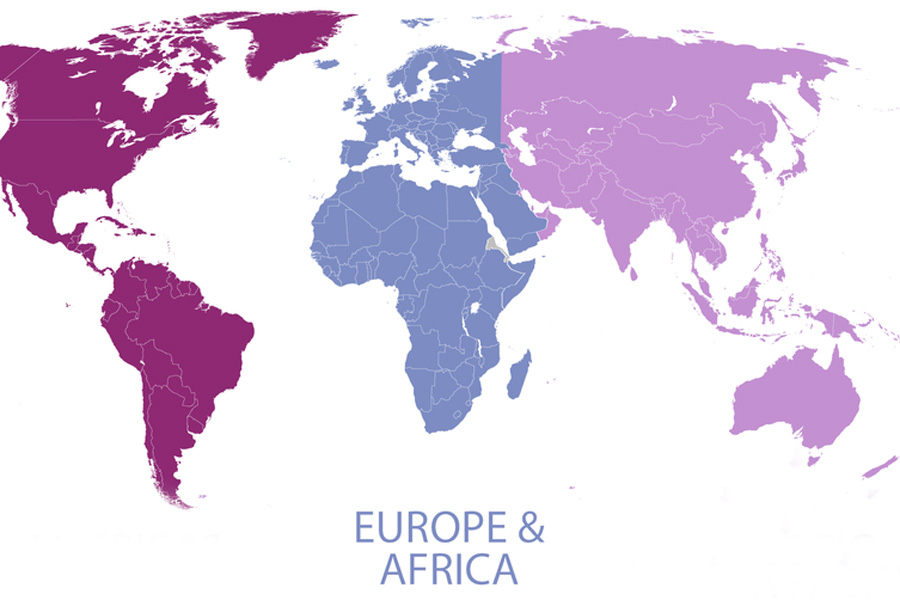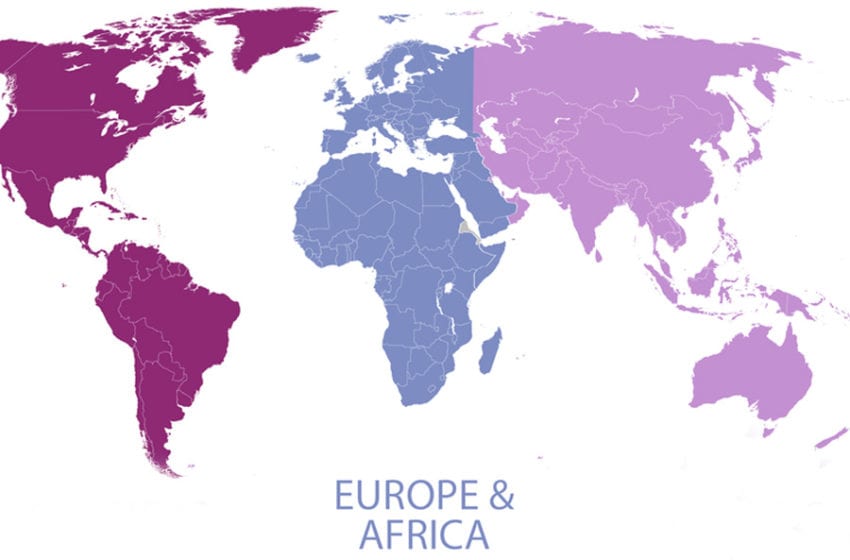
Global tobacco harm reduction trends and policies, sustainable growth, next-generation products (NGP) and illicit trade were at the core of discussions in the European/African stream of this year’s Global Tobacco & Nicotine Forum (GTNF). Covid-19, which continues to impact our daily lives and turned the industry’s annual get-together into a virtual event, was also a major theme—the pandemic unexpectedly added a new dimension to the role of nicotine, revealing potentially beneficial traits of the alkaloid.
Early in the outbreak, scientists observed that smokers were underrepresented among patients hospitalized with coronavirus infections. Since then, research has suggested that nicotine may prevent the disease from taking a severe course that requires hospitalization. Some believe the substance may even reduce the risk of contracting Covid-19 in the first place. Clinical trials have been set up with both smokers and nonsmokers to examine the value of nicotine in the fight against the coronavirus.
The pandemic has also provided an opportunity to show the potential of the tobacco plant as an efficient producer of vaccines. Protecting nearly eight billion people against the coronavirus will require a multiple vaccine product and vaccine manufacturer approach. Tobacco plant-based vaccines have several advantages over conventionally developed vaccines, including high fidelity in virus gene expression and fast availability and stability at room temperature, which is likely to make them an important pillar in immunization strategies. To date, several biotech companies—among them British American Tobacco’s subsidiary Kentucky Bioprocessing and Philip Morris International’s affiliate Medicago, along with Chulalongkorn University in Bangkok (see “Joining the Race,” page xx)—have developed Covid-19 vaccine candidates from tobacco plants that have all been successful in preclinical testing.
Whether in traditional or plant-based vaccine development, Covid-19 has meant a great disruption to scientists who have the ethical responsibility and now need to have the courage to do research including society, a panelist claimed. It has also moved forward the interaction between politics and science. In terms of tobacco, consumers’ increasing focus on health during the pandemic is hoped to help accelerate the transition to reduced-risk products (RRPs) as the intensified interest in science could encourage evidence-based policies and acceptance of tobacco harm reduction (THR).
Rocky road to harm reduction
Presently, THR policies continue to vary greatly between countries. The debate on the value of THR interventions remains ideological and emotional, which continues to hinder a constructive dialogue. While some progress has been made on the acceptance of alternative tobacco products, as evidenced by the U.S. Food and Drug Administration’s (FDA) authorization of several products, there’s still a long way to go, with events such as last year’s EVALI crisis and the recurring “gateway” discussions impacting the process negatively.
To drive THR, RRPs should be seen and pitched as complimentary to traditional smoking strategies, such as nicotine-replacement therapy, a panelist suggested, whereas at the same time more quality research and especially more local scientific research are needed to enable informed, context-specific, risk-proportionate regulatory policies. Particularly developing countries, which look to the World Health Organization (WHO) for guidance, are still deprived of THR options.
Judging from a recent European WHO report and the fact that RRPs were discussed at the last Framework Convention on Tobacco Control’s (FCTC) Conference of the Parties, though, panelists were optimistic that the organization will soften its stance toward THR in the future, finally acknowledging that RRPs could benefit public health. A major hurdle to the acceptance of THR within the WHO, however, is the conflict of interest caused by state ownership of tobacco companies, according to one panelist. Almost 50 percent of the global tobacco industry is controlled by eight governments—China, Iran, Iraq, Lebanon, Syria, Thailand, Indonesia and Vietnam—which are at the same time signatories to the FCTC. In total, there are 18 countries where governments own 10 percent or more in tobacco companies. Seventeen of these countries have endorsed the FCTC—an unethical issue the WHO refuses to address, according to one speaker.
Harm reduction could be an interesting opportunity for governments to escape this conflict as the choice would not be between all and nothing as with the WHO’s current abolitionist stance. To enable the acceptance of THR, it would be necessary to amend the FCTC, which was launched at a time when RRPs were in their infancy.
The greatest irony, according to one panel member, is that even as the WHO has excluded the tobacco industry from debate, FCTC signatories owning the world’s largest tobacco companies are allowed to help shape regulations. He singled out five conditions required for the acceleration of a framework for THR: an evidence-based approach, proportionate regulation that is enforceable for the regulator and understandable to the consumer, the freedom to innovate and to market new products, an engagement and dialogues involving stakeholders that society can understand, and responsible marketing to the consumer.
Contraband
The prevailing strategy to curb cigarette consumption with repeated and often disproportionate tax hikes has prepared fertile ground for illicit trade, and the associated damage is often underestimated. Illicit tobacco trade is a “crime enabler,” funding gangs and terrorism, for example. About 600 billion cigarettes, or 10 percent of annual global consumption, are estimated to be illicit, amounting to worldwide revenue loss between $40 billion and 50 billion.
In the EU alone, illicit cigarette traders generate profits of between €7.8 billion ($9.19 billion) and €10.5 billion annually. However, the nature of the black market for tobacco products in the EU has changed in recent years, with the countries manufacturing cheap whites getting closer to their destination markets and the number of illicit factories rising in central Europe.
In response, the EU police authority, Europol, has adapted its structure and now works closely with liaison bureaus in all EU member states. In the U.K., the organization Crimestoppers International is educating the public on the consequences of buying tobacco from illegal sources.
Following a steep tax hike in 2015, Malaysia now has the world’s most expensive cigarettes relative to purchasing power. As a result, contraband product today accounts for 65 percent of its tobacco market. There is a sophisticated system of illegal syndicates, which have the resources to infiltrate state agencies. One strategy to tackle the illicit cigarette trade problem is to “follow the money.” Indonesia, China and Vietnam supply most of the cigarettes sold illicitly in Malaysia, which itself is just a transit market for illicit products destined for Australia. Experts have called for closer cooperation among law enforcement agencies, private-public partnerships, harmonized national legislation and tax moratoriums.
A more sustainable supply chain
With the United Nations’ Sustainability Development Goals (SDG) set to become mandatory by 2030, sustainability of the leaf supply chain remains an important theme for the tobacco industry. Increasingly, authorities are including human rights considerations in their regulatory frameworks. When violations occur, companies are not only liable but also risk reputational damage. Over the past years, tobacco companies have stepped up their efforts to support the most vulnerable link in their supply chains—tobacco farmers. A large percentage of the world’s tobacco is cultivated by small-scale farmers in low-income and middle-income countries.
In 2016, all major global cigarette manufacturers and leaf suppliers adopted the Sustainable Tobacco Program (STP), an industry-wide initiative aimed at bringing together best practice from across the industry and driving continuous improvement. The program covers areas such as sustainable farming, agrochemicals, soil and water management and actions that can be taken to prevent child labor, forced labor and to create safer working environments. It is aligned to external standards, such as those of the International Labor Organization, and gets guidance from Coresta and the Organization of Economic Co-operation and Development. The initiative is currently being reformed to attract more industry stakeholders.
To meet the unique challenges tobacco represents to sustainability and social responsibility, panelists called for a joint approach with unified standards.
What investors want
Investors too are increasingly interested in sustainable growth. Thus far, tobacco stocks have hardly been associated with environmental, social and governance (ESG) criteria. Benefiting from an addictive, highly profitable and recession-resilient product, they were valued primarily for being strong performers and offering generous dividends.
Over the past three years, however, most tobacco shares underperformed. While the combustible cigarette sector, despite risks such as increased regulation and declining smoking rates, has traditionally offered investors predictability, this has changed with tobacco companies’ stronger focus on NGPs. Developments over the next years are therefore difficult to predict, an analyst commented, but hopes are that investors will eventually get more comfortable with the uncertainty—and promise—of RRPs.
To become a more sustainable industry attractive to investors, panelists argued, the tobacco industry needs to be more regenerative and inclusive. The pace of its transformation toward harm reduction will also be important. Tobacco companies need to involve consumers, hear what they want and offer them more choice.
The Foundation for a Smoke-Free World’s Tobacco Transformation Index, which debuted shortly before the GTNF, was considered a good starting point. As a benchmarking exercise, it could become an incentive for companies to accelerate innovation in NGPs.
While both RRPs and a sensible regulatory framework are expected to come to most countries eventually, it remains limited to developed countries for the time being. Only once developed markets mature for these products are companies likely to start looking for new, emerging markets.
Channeling innovation
Innovations will be the crucial factor in the tobacco sector’s journey toward risk reduction. While the next big innovation in NGPs is impossible to predict, panelists agreed that e-cigarettes have revolutionized the consumption of nicotine, bringing about a realm of new developments in a short time compared to decades of stagnation in the combustible cigarette segment. In contrast to the early years when much innovation came from consumers, the leading companies are now the source of novel developments. Advances are expected in heating technology, prevention of youth access and automation of the manufacturing process, which would make RRPs more affordable.
Regulations and enforcement are essential in the transition toward harm-reduced tobacco products, but they also risk stifling innovation. Speakers cited the FDA’s approval process for novel tobacco products in the U.S.—on the one hand, the costly, long-winded authorization procedures are expected to drive smaller vapor companies out of business. Innovation in the future, a panelist argued, will focus more on demand of the existing consumers and follow FDA approval requirements. On the other hand, regulation will also allow companies to plan innovation rather than rush into something, making market entry a more meaningful, thought-through process.











